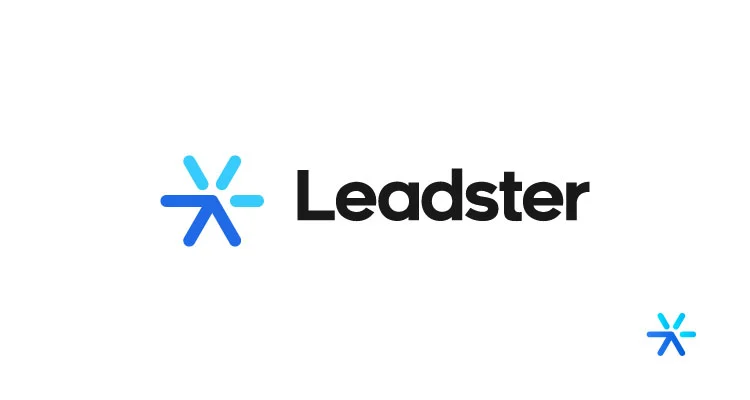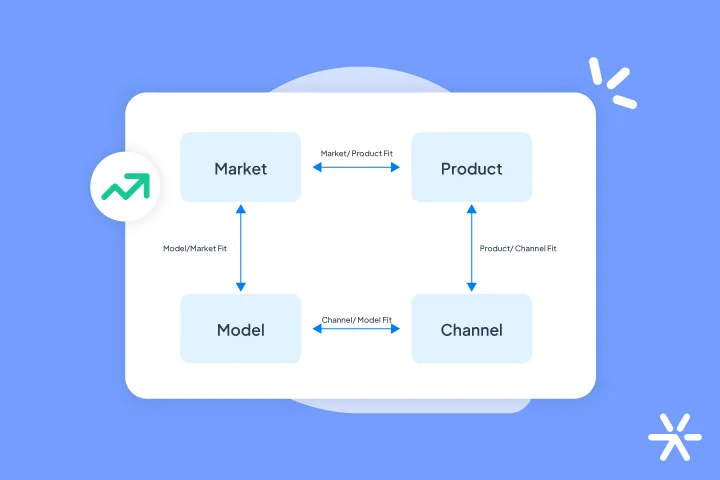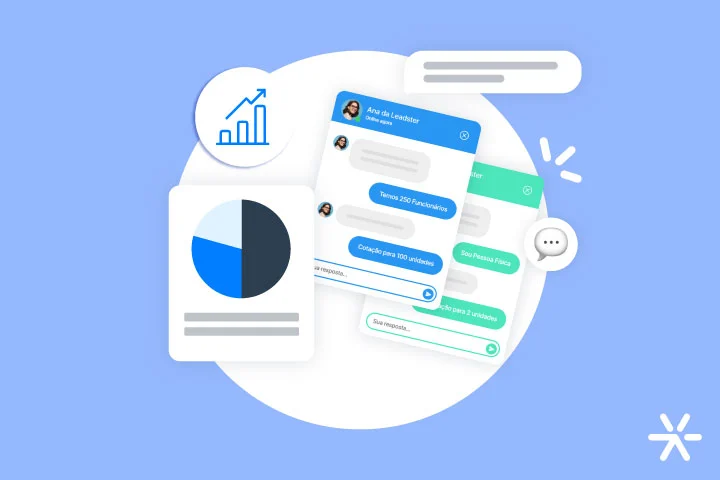Product Market Fit : 10 Startup Strategies
Analyzing and Seeking Product Market Fit
Analyzing and seeking Product Market Fit is a strategy widely used by startups on the long journey between their conception and the realization of their objectives and products.
A journey that we ourselves have traversed here at Leadster – from its initial format, with the first prototypes, to today.
Product Market Fit itself shouldn’t even be called a strategy. It’s more like an objective, a conclusion that startups reach through extensive internal analysis and market research.
Achieving it can take time. Or it can be instantaneous. It all depends on your market, your ideas, and your ability to always be learning, analyzing, and changing – the faster, the better.
This article will be a little different: I’ll share my journey and Leadster’s journey through examples throughout the topics, to show you what Product Market Fit is and how to achieve it.
Let’s go:
What is Product Market Fit?
You’re familiar with the marketing mix, right? It’s the 4 Ps for the growth of any brand: price, product, place, and promotion.
Product Market Fit also has four commandments, but they are a bit different. It’s part of a growth strategy known as the 4 fits. Along with it, we also have the Channel Model Fit, the Model Market Fit, and the Product Channel Fit.
All of this together becomes a scalable growth framework widely used by startups, which naturally need rapid growth.
Product Market Fit is when your product fits perfectly in the market. It’s the point of balance between the public’s demand and what your product is offering.
To better understand these abstract concepts, we determine the market-product fit through three fundamental indicators:
- Economic viability: your business model can generate profit;
- Desirability: there is a large market with a problem to solve;
- Technical feasibility: besides solving the market’s problem, your technical and development team can actually bring the idea to life and apply it in practice.
💡I’ll talk in more detail about these three points a little later in the article.
In our case, it took us several years to reach these three points. Many people think that startups come up with the perfect idea, the perfect product, and the perfect strategy overnight.
But the truth is a bit different. Many startups have very different products and value propositions in their early years.
With time and the maturity that the market brings, they gradually develop, discovering themselves and discovering what the world expects from them.
But let’s talk a little more about the 4 fits because they are very important.
What is Product Channel Fit?
You can’t fit a Playmobil figure into a Lego scenario. You can try, but all you’ll achieve is a somewhat crooked arrangement that’s about to collapse with the first breeze.
Understanding Product Channel Fit is the same thing. Many people think that the market should adapt to the product when it’s good – that is, the focus should only be on Product Market Fit, the most important one.
According to this logic, the product needs to be developed thinking only about the market’s needs. The sales channels should adapt.
This is a utopian approach because sales channels will never adapt on their own to your product. Your product should adapt to the channels.
If it’s an innovation in retail, you need to consider issues like transportation and packaging. If your product is digital, you need to understand that it should be suitable for the main online advertising channels – like Google and social media.
This prevents you from having problems in the future with minor issues: a chocolate that arrives at the stores melted or a website with a name not accepted by search engines and ads.
What is Model Market Fit?
Model Market Fit is a slightly different philosophy, not involving channels but rather an analysis of your entire market, and what influence that market has on your business model.
The available number of consumers in your segment or niche will have a direct influence on your business model. This is Model Market Fit.
I.E.: Dollar Shave Club. They work with a subscription model that costs US$4,50. The customer pays and receives at home, every month, a razor blade.
This business model only works because it is directly related to the size of DSC’s audience. With the market size exceeding tens of millions of people, it’s possible to maintain such a low price.
But let’s suppose that there are only 10,000 bearded men in the U.S. today. Even if all of them subscribed to the Dollar Shave Club, the company would only have $45,000 in monthly revenue.
That’s how the business model is influenced by the market. And this influence is called Model Market Fit.
What is Channel Model Fit?
The last fit is the simplest and most intuitive: your business model is influenced by the channels where you operate.
Let’s continue with the example of the Dollar Shave Club a little longer. If your distribution channel were not the internet but supermarkets, your razor blades wouldn’t cost $1 dollar. They would have a competitive and comparable price with other blades.
Now think about our case here at Leadster. If we had started our activities in the early 2000s, it’s likely that we would have had to work with physical media, just like it used to be: you would go to a store and buy a CD with the program.
Thinking like this, we would have had several other costs in the chain: packaging, the cost of producing CDs, distribution, exchanges of defective products, etc.
That’s why buying original software was very expensive at that time. It was an adaptation of the business model to the sales channel.
The Three Key Elements to Explain PMF

All good with all the fits so far?
Our journey with Leadster has been long. Our first product focused on automating customer service in companies and was created in 2015 when we were still called Neurologic.
Since then until today, our main product has changed a lot. Today, our focus is on a Conversational Marketing platform focused on lead generation and marketing automation.
We listened to the market and always put ourselves in a learning position to perfectly achieve the three main objectives of Product Market Fit: economic viability, technical feasibility, and market desirability.
I’ll tell you a little more about this journey now, while explaining these three points better:
Economic Viability
To understand economic viability, we need to activate the Channel Model Fit and the Model Market Fit. These are the fits that deal with the viability of your company, brand, startup, or product.
Economic viability concerns your ability to grow. Is there a market for what you’re proposing? And does your business model fit with the channels available in that market?
It’s also necessary to evaluate internal issues of your business model. Where do you extract profit from? Is the bureaucracy of your segment easy to navigate? Does market competition allow new players?
Identifying the economic viability of your business is a very important part of Product Market Fit, but it’s not the only one: there’s also technical feasibility.
Technical Feasibility
Many startups have simply brilliant ideas. They are so disruptive that they promise to alter social fabric forever, change how people see and interact with the world.
But then, when it comes to bringing the product into the world, it’s technically unfeasible to produce.
And I’m not talking about the impossibility of production. Some products, once produced, are so complex that they require a huge support team and agents allocated to the client giving training for weeks.
For some companies, this is perfectly viable. Look at the case of Salesforce, for example. For others, not so much.
Our case at Neurologic demonstrated a problem with the technical viability of our product. Customers had a very steep learning curve because our product was more complex and aimed at the future.
We encountered many limitations with the development of artificial intelligence, which until today has not developed enough to reach the initial level of our idea.
That’s when we changed our approach and started offering a chatbot focused on lead generation instead of customer service automation. We focused on a positive aspect of our work – conversational marketing – instead of trying to embrace the world.
And it worked. 🌝
Desirability
The last point to consider is what your market wants.
We also encountered this problem at Neurologic. We greatly reduced our market – the number of consumers in it – because we were working with an innovative tool that few people wanted.
Back in 2015, Neurologic promised to automate companies’ customer service and support through an AI chatbot.
The problem is that we discovered during development and our market strategies that most companies did not feel the need to automate this department.
And combined with the long implementation process that this automation requires, we ended up reducing the market even further.
Desirability is the hardest point to achieve in Product Market Fit. Often we imagine that solution is right for our target audience, but we discover the mistake at the time of launch. This happens.
The important thing in the startup world is to fail fast and learn from these mistakes. And speaking of that…

The Startup Philosophy and Its Relationship with PMF

Being part of a startup is being part of a movement, a philosophy, a very specific methodology that evolves not decade by decade, but month by month.
Each startup brings innovations to its business model, its products, and its market disruptions that turn into valuable knowledge for the next ones to emerge.
All of this has a direct relationship with Product Market Fit. The philosophy of startups seeks PMF as its main objective, and although we understand up to this point that it is composed of several other points and actions, achieving it is an urgent necessity.
But how exactly does this relationship happen? Where does the energy of startups to reach Product Market Fit come from? What are the behaviors that differentiate them from ordinary companies?
I invite you to explore these questions a little more by understanding how Leadster got to where it is today. Let’s go?
Fail Fast
Failing fast is one of the main philosophies of the startup world, and it is fundamental to achieving Product Market Fit and entering the market.
Innovative business models and products are not born ready. They are the result of several previous attempts, several learnings that startups can only achieve by trying, learning, and correcting.
All of this quickly.
Focus on Learning
Failing fast is important because, in a startup, the only way to understand what works and what doesn’t is by trying.
Learning from mistakes is very important. And this learning can take surprising forms. Something Paul Graham says that motivated me a lot in the conception of Leadster in its final form is “do things that don’t scale.”
For example: we began to understand the difficulties of implementing our original system, still as Neurologic, by visiting customers and understanding their true pains.
Through these visits, which are not scalable because they involve a great deal of time commitment, a very valuable resource in startups, we were able to see firsthand the work our clients were doing.
And through them, we understood that, despite their support and service area being more costly than the price of our product, it already worked well in most companies.
Our product, then, would only bring long-term results, and in the short term, more difficulties.
This we learned by talking. Seeing with our own eyes. Failing, learning, and moving on.
Relationship between Product and Marketing
The best marketing doesn’t save a bad product. But the best product can save ineffective marketing.
The focus on Product Market Fit in startups follows this maxim, which applies to startups as well as any product.
By failing fast and learning from these mistakes, we understood that marketing led us to a series of meetings and even to closing deals with some clients.
Marketing can get you seated in any client’s meeting room. But this client doesn’t close the deal with marketing, but with the product.
The difficulties at the bottom of the sales funnel will also help you understand the situation of your Product Market Fit. If, thanks to marketing, you get many meetings but close few sales, you haven’t reached your goal yet.
But at least you failed fast and learned. And that was only possible because of the last strategy:
Sales from Day Zero
Between 2017 and 2019, Leadster was a slide presentation. Seriously.
We didn’t have a ready product, not a single line of code typed. But we were already selling and presenting the product to clients.
The idea behind this strategy is that you need to understand the market to really reach Product Market Fit.
Market research where you ask “would you use a product like this and that?” is not as effective as presenting your product directly to the market. Even if the product doesn’t exist yet.
It was with the growing volume of sales and the acceptance of our clients that we began to understand how close we were to Product Market Fit. And that gave us the motivation to develop the product the market was expecting.
10 Tips to Achieve Product Market Fit Faster

Are you launching a product now and need to achieve Product Market Fit? From what we’ve discussed throughout the article, you probably already understand that this work takes time and is quite heavy.
However, there are a series of techniques that we use that will help you achieve your Product Market Fit more quickly.
Remember that the paths other startups have taken will help you understand your own path, right? So, see the steps we have already taken on this road and use them to plan your next ones.
Market Research
I’ve talked a lot about market research throughout the article, but it’s important to emphasize that the best research is the one you conduct in the field.
After you have a good idea of what your product will be, start selling. And understand the signals that the market is giving you. And visit your customers.
Fieldwork is fundamental for product ideation and achieving Product Market Fit.
In-depth market research, however, done in the traditional marketing research molds, will give you a great idea of the size of your market. And who you are talking to. Who you will sell to.
➡️ To better understand how traditional marketing research works, I recommend reading our article on the subject: How to do Market Research? 5 resources and 10 questions.
Space for Feedback
There should always be room for customer feedback in your market strategy. This is one of the best metrics you can have to find your Product Market Fit.
In our case, during the Neurologic era, we already had a product and customers. Their feedback made us understand what the real market needs were. And how our product didn’t solve them.
Open communication channels with your customers. Hold face-to-face meetings, go out into the field, and do non-scalable things. This information will be very useful for the future and for the present as well.
MVP creation
The MVP is the Minimum Viable Product, an initial prototype of your product.
The idea behind the MVP is that it does not require full technical availability from your team during the initial stages of development.
To get feedback, you need a product, right? But for the product to be 100% ready, with all its imagined functionalities, you need to invest time and money.
And if, even with your product ready, you don’t achieve Product Market Fit?
At this point, an MVP saves development time and resources. By taking your product to the market with the main basic functionalities working, you can have an immediate response, much more direct than market research.
Creation of Value Proposition
The value proposition is a statement of what your product will offer to your customers and to society as a whole.
Its main concern is to express, clearly and concisely, what are the values that guided the construction of the product, and what it promises to the world.
We have an entire article dedicated to creating a value proposition, with examples and a guide to help you create yours. Worth the read.
Constant Testing
If you fail fast, it means you’re trying hard. And those who try hard conduct a series of tests every day to prove the viability of their product.
Finding the Product Market Fit depends on tests. Which tests to apply depend on the nature of your product.
Apps and software constantly release betas, seeking to understand users’ main difficulties and their most common uses.
Retail startups start their activities in one or two regions initially, to understand the public’s adoption and what leads people to use them.
Test wherever you can, but don’t stop testing. And during the tests, it’s important to quantify your results in metrics. More on that now.
Data Collection and Analysis
All tests generate data. And data should be cherished in product development.
Through this data, you will be able to interpret all the information you need. Without data, you can’t even begin to understand the main impressions your product is causing among the population.
Therefore, have a method of data collection and formalization as soon as possible, to serve as a reference in the future and understand how close you are to the Product Market Fit.
No Fear of Pivoting
If your data, field visits, and market impressions are showing that you are far from your Product Market Fit, don’t be afraid to pivot, to go in a completely different direction from what you have been following so far.
We did this here at Leadster. And it worked. The thing is, during the development of your product, the Product Market Fit is a spectrum. You may not have reached it, but every day that passes you get a little closer.
If your indicators are telling you it’s time to change direction, you don’t lose the path you’ve taken so far. It’s a slight detour, but you won’t be starting from scratch.
Multidisciplinary Team
Having a multidisciplinary team will help you understand your market’s needs better.
Simply because people from different areas and backgrounds offer you different views on the data and situations you are observing.
Many startups hold open meetings, where anyone can participate at any time. This helps expand understanding of the product and its reception, increasing the chances of you achieving the Product Market Fit.
Patience
Many things take time. Reaching the maturity of your product is a long journey that, although shorter than in most companies, is still part of the startup journey.
Be patient, don’t try to put the cart before the horse. Analyze what you need to analyze, be part of the market, talk to other startups in your segment, and be part of the ecosystem.
Only then will you have the necessary tools to truly understand how to reach the Product Market Fit.
Thank you very much for sharing Leadster’s story so far. If you are our client and you are reading this article, you have been an active part of it.
And if you are not yet, sharing what we have learned with you is also a very valuable and unique opportunity for us.
We learn from everyone, all the time. And it was only by listening and observing that we finally managed to reach our Product Market Fit.
This article is an invitation for you to do the same. Listen, observe, analyze the market whenever you can. It will show you the way.
And now, another invitation: check out our website, our pricing page, test Leadster: feel free to spy on us all you want! We hope we can inspire you with some of our PMF strategies.








